
Cepora nadina, the lesser gull, is a small to medium-sized butterfly of the family Pieridae, that is, the yellows and whites. The species was first described by Hippolyte Lucas in 1852. It is native to Sri Lanka, India, Myanmar, Hainan, and southeast Asia.

Libythea lepita, the common beak, is a butterfly that belongs to the Libytheinae group of the brush-footed butterflies family. It is found from southern India to Japan and its larval food plants include members of the Cannabaceae, particularly in the genera Celtis and Trema.

Libythea myrrha, the club beak, is a butterfly found in India that belongs to the Libytheinae group of the brush-footed butterflies family found in the Indomalayan realm.
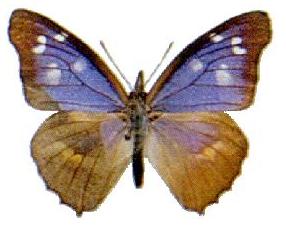
Libythea geoffroy, the purple beak, is a butterfly found in parts of India and Myanmar that belongs to the subfamily Libytheinae of the family Nymphalidae.
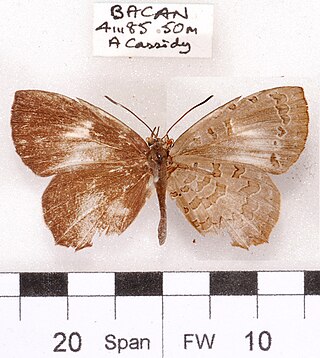
Miletus boisduvali, the common brownie, is a small but striking butterfly found in India and Myanmar that belongs to the lycaenids or blues family.

Miletus symethus, the great brownie, is a small butterfly found in India that belongs to the lycaenids or blues family. The species was first described by Pieter Cramer in 1777.

Azanus ubaldus, the bright babul blue, desert babul blue, or velvet-spotted blue, is a small butterfly found in India, the Middle East and Africa that belongs to the lycaenids or blues family.

Niphanda cymbia, the pointed Pierrot, is a small butterfly found in northern India, Burma and northern Borneo that belongs to the lycaenids or blues family.

Neopithecops zalmora, the Quaker, is a small butterfly found in South Asia and Southeast Asia that belongs to the lycaenids or blues family.

Orthomiella pontis, the straightwing blue, is a small butterfly found in India that belongs to the lycaenids or blues family.

Jamides kankena, the glistening cerulean, is a small butterfly found in India that belongs to the lycaenids or blues family.

Curetis bulis, the bright sunbeam, is a species of butterfly belonging to the lycaenid family. It is found in Asia.
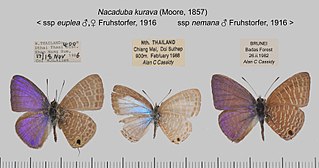
Nacaduba kurava, the transparent six-line blue, is a Lycaenidae butterfly found in Asia and Australia. The species was first described by Frederic Moore in 1857.

Nacaduba hermus, the pale four-line blue, is a species of lycaenid butterfly found in Indomalayan realm. The species was first described by Baron Cajetan von Felder in 1860.

Nacaduba berenice, the rounded six-line blue, is a lycaenid butterfly found in Indomalayan realm. The species was first described by Gottlieb August Wilhelm Herrich-Schäffer in 1869.
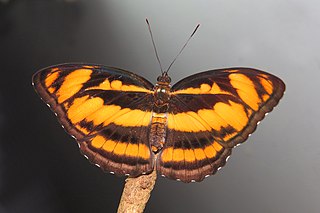
Athyma nefte, the colour sergeant, is a species of brush-footed butterfly found in tropical South and Southeast Asia.

Vindula erota, the common cruiser, is a species of nymphalid butterfly found in forested areas of tropical South Asia and Southeast Asia.

The Indian fritillary is a species of butterfly of the nymphalid or brush-footed family. It is usually found from south and southeast Asia to Australia.
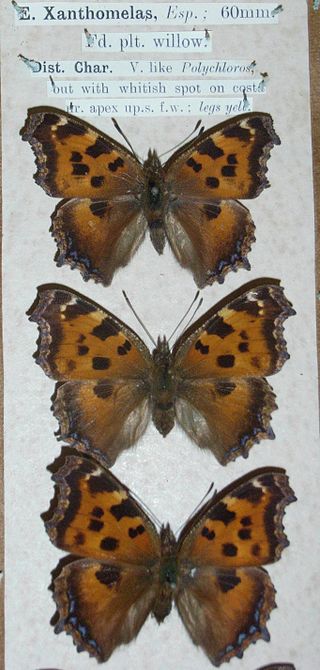
Nymphalis xanthomelas, the scarce tortoiseshell, is a species of nymphalid butterfly found in eastern Europe and Asia. This butterfly is also referred as yellow-legged tortoiseshell or large tortoiseshell.

Catochrysops strabo, the forget-me-not, is a small butterfly found in Asia that belongs to the lycaenids or blues family. The species was first described by Johan Christian Fabricius in 1793. It is found in Sri Lanka, India, from Sikkim to Indochina and in Sundaland, Sulawesi and the Philippines.























